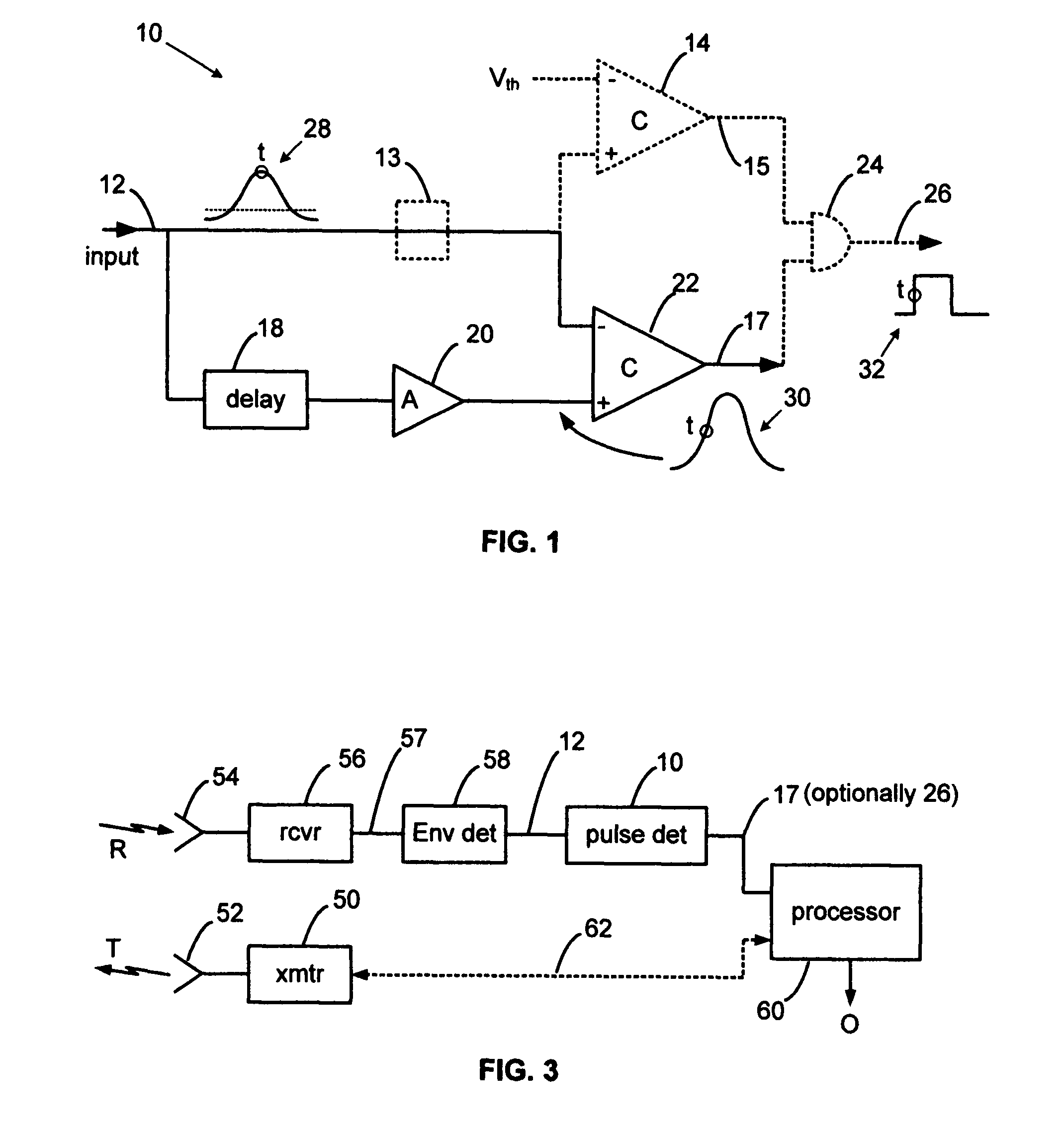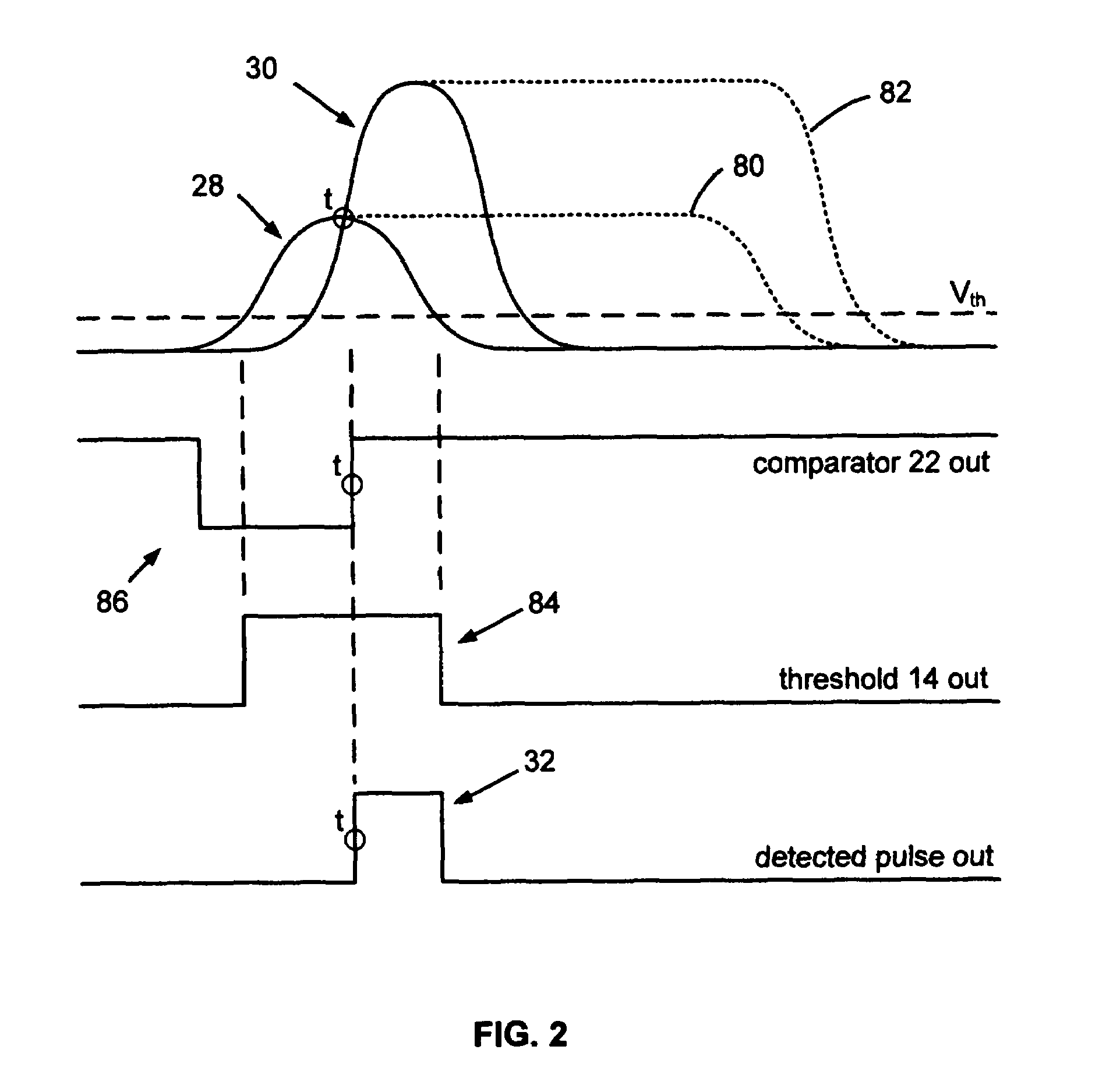Self-referencing radar pulse detector
a pulse detector and self-referencing technology, applied in pulse techniques, instruments, amplitude demodulation, etc., can solve the problems of cfd showing latency errors, range measurement errors, and particular latency errors, and achieve accurate, simple and inexpensive effects, and zero latency
- Summary
- Abstract
- Description
- Claims
- Application Information
AI Technical Summary
Benefits of technology
Problems solved by technology
Method used
Image
Examples
Embodiment Construction
[0014]A detailed description of the present invention is provided below with reference to the figures. While illustrative parameters and embodiments are given, other embodiments can be constructed with other parameters.
General Description
[0015]The present invention overcomes the limitations of prior radar video pulse (RVP) detectors by using the RVP itself as an automatic reference voltage. A delayed and amplified version of the RVP is then used as the pulse to be detected. Detection occurs whenever the delayed and amplified RVP exceeds the instantaneous amplitude of the RVP itself. Since the detection reference is set by the RVP itself, i.e., since it is self-referencing, the temporal location of the detection point is independent of the RVP amplitude.
[0016]The temporal location of the detection point is effectively on the leading edge of the RVP, generally in the middle of the risetime where the slew rate is greatest. Accordingly, sensitivity to noise is minimized, particularly wh...
PUM
 Login to View More
Login to View More Abstract
Description
Claims
Application Information
 Login to View More
Login to View More - R&D
- Intellectual Property
- Life Sciences
- Materials
- Tech Scout
- Unparalleled Data Quality
- Higher Quality Content
- 60% Fewer Hallucinations
Browse by: Latest US Patents, China's latest patents, Technical Efficacy Thesaurus, Application Domain, Technology Topic, Popular Technical Reports.
© 2025 PatSnap. All rights reserved.Legal|Privacy policy|Modern Slavery Act Transparency Statement|Sitemap|About US| Contact US: help@patsnap.com



